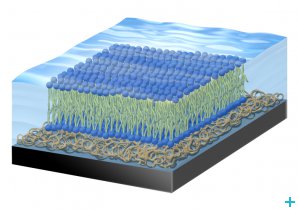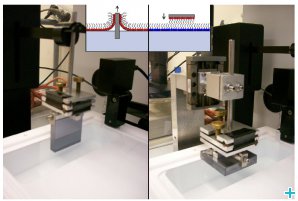Interview with Giovanna Fragneto
08/02/2013

Giovanna Fragneto is a Senior Fellow for Soft Condensed Matter at the Institut Laue-Langevin (ILL). Within NMI3, she is the coordinator of the task A platform for model biological membranes for structural and dynamical characterisations of the Joint Research Activity (JRA) Advanced Neutron Tools for Soft and Bio-Materials.
In a short interview, she told Inês Crespo how neutrons are helping her on her research work.
Inês Crespo: Tell me the story of your NMI3 JRA. How did the idea for this collaboration come up?
Giovanna Fragneto: In the last 10-15 years here at ILL and also in other neutron facilities, there has been a strong effort to try to mimic the membrane of cells. With neutrons we have powerful tools to characterise the structure of these membranes, their dynamics and to see the interaction of proteins and other biological molecules with the lipids that form the membrane. Even though there has been lots of progress on this type of research, we are still unable, in the various facilities, to provide biologists robust and reproducible membrane mimics to use for the study of the various interactions that take place at the membrane level.
The aim of this JRA is to improve development in this area and to set-up a platform where we can have reproducible methods for producing these model membranes and characterising them with neutron techniques as well as complementary techniques. A key aspect of the JRA is to move towards more biological relevant models. For doing so, we are setting up a platform of lipid extraction from deuterated cells that are provided by the deuteration laboratory. We need deuteration for neutron techniques and this is going to improve the quality of our measurements.
For these purposes we hired a post-doc this year and we will hire a technician for the lipid extraction part, and we also have a trainee working on this. In fact, there are several scientists at the ILL interested in working on this area.
How do these techniques work?
We have a single-lipid bilayer that we characterise mainly with the techniques of reflectometry, both with neutrons and X-rays. We send a highly collimated beam of neutrons onto our (flat) sample surface at a very small angle. Given that the beam interacts with the layers on the surface, by collecting the reflected beam we are able to extract the structure and composition of these layers.
What is the advantage of employing these techniques?
We use neutron reflectometry because this is a very powerful technique. We need a probe able to characterise a sample at the Ångstrom scale; there are not so many possibilities and neutrons is one of them. We also need to penetrate deeply into matter to reach an interface, so there are some limitations for X-rays and optics techniques, whereas with neutrons this is possible. It is also very important that we can make use of deuterium labelling so that we can highlight parts of the system of interest. Basically there are no other non-destructive techniques (e.g. X-rays damage the sample) able to give structural information at this resolution on this kind of systems, so neutron reflectometry suits our aims.
What are the implications of your research work for the “real world”?
There is still a wide variety of systems that need to be understood at the level of the cell’s membrane, e.g. how toxins penetrate the membrane; how a drug delivery vector can cross the membrane and reach the target inside the cell; there is a number of common diseases (e.g. Alzheimer, Parkinson, etc) that are very likely due to some modifications of cell membranes, accumulations of certain peptides, formation of certain domains in the membranes, and their structure is still not understood. Our aim is that the work that we are performing within this JRA can help improve understanding in all these fields.
How do you see the future of this type of research?
There is so much being done in several facilities and laboratories that I’m convinced that we will eventually manage to have a good model and then really exploit the power of neutron techniques for working on membrane behaviours and membrane interactions and functions.

